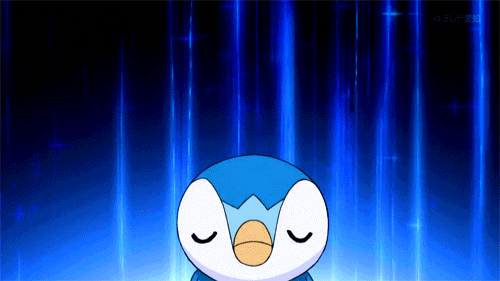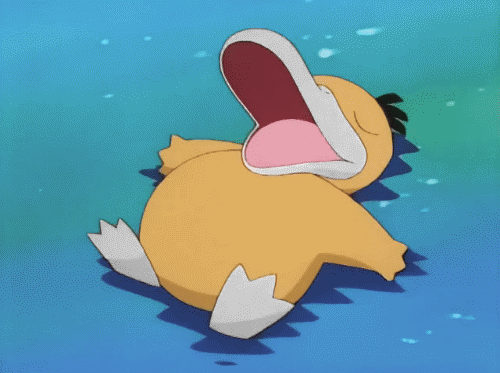#koreanstudy
빵 터지다 ~ to burst out laughing
(빵- bread)
빵- the sound produced when an object explodes, bursts
터지다- to explode, burst, popThis is a Korean slang.
I try to think of it being similar to how we say “I’m dying/ I’m dead” when something is really funny.Ex: if you show your friend a funny gif you can say “빵 터지다” - thats so funny, I’m dying (of laughter), I’m cracking up
빵 터졌어- I’m cracking up, I’m laughing
저의 아빠가 빵 터졌어요- my dad was laughing/cracking up그 드라마 보고 빵 터졌어요- that drama made me burst out in laughter
Pic: remember this phrase by picturing bread exploding hahahaha
#korean #korea #koreanlanguage #koreanstudy #koreanlearning #language #koreanwords #koreangrammar #koreansoul #koreansoulstudy #studygram #studyinspo #한국어공부 #한국어 #한국말 #한국말공부 #studygram #studyingkorean #learnkoreanlanguage #koreanvocab #koreanvocabulary #koreanaesthetic #koreans #koreanculture #koreangirl #한국어배우기 #한국어를 (at Koreatown)
https://www.instagram.com/p/B8xLfhsBXgP/?igshid=fmllnv2rupem
Post link
漢字 (한자 - Hanja) 3
日 = 일 (날 일): day

- 내日 (내일)= tomorrow
- 매日 (매일)= everyday
- 日상 (일상)= daily life
- 日본 (일본)= Japan
- 日요日 (일요일)= Sunday
月 = 월 (달 월): month

- 月세 (월세)= (monthly) rent
- 매月 (매월)= every month
- 세月 (세월)= time
- 月요日 (월요일)= Monday
- 1月 (1월)= January
年 = 년 (해 년): year

- 작年 (작년)= last year
- 내年 (내년)= next year
- 매年 (매년)= every year
- 금年 (금년)= this year
- 학年 (학년)= a grade in school (1st grade, 2nd grade, etc..)
內 = 내 (안 내): inside

- 실內 (실내)= inside a place
- 국內 (국내)= inside a country
- 內부 (내부)= the interior part
外 = 외 (바깔 외): outside

- 外국 (외국)= foreign (outside country)
- 外국인 (외국인)= foreigner
- 제外하다 (제외하다)= except
- 해外 (해외)= foreign country
- 外出하다 (외출하다)= to leave
Happy learning! ^^
Source: How to study Korean - Hanja

이/그/저 with 이다
Remember:
- 이다: to be. It’s conjugated as “am/is/are”.
- 이: this
- 그/저: that
- 이것/그것/저것
Now time to make sentences: for example let’s use the phrase “this person is a doctor”. The first step it to transform it using the korean sentences structure, so it would look like “that person는 doctor is”. And now we can write it like this:
그 사람은 + 의사 + 이다 = 그 사람은 의사야 (informal) / 그 사람은 의사예요 (formal)
Examples: you can copy these and try to form the sentences by yourself or you can make your own using these only as examples/a guide.
- this person is a teacher: 이 사람은 선생님 이다 = 이 사람은 선생님이야 / 이 사람은 선생님이예요
- this (thing) is a table: 이것은 탁자 이다 = 이것은 탁자야 / 이것은 탁자예요
- that (thing) is a bed: 저것은 침대 이다 = 저것은 침대야 / 저것은 침대예요
- that person is a man: 그 사람은 남자 이다 = 그 사람은 남자야 / 그 사람은 남자예요
- this (thing) is a tree: 이것은 나무 이다 = 이것은 나무야 / 이것은 나무예요
source material: howtostudykorean
Random Vocab 9
- 알다: to know, understand
- 앨범: album (음악, 사진)
- 어디: where
- 어때요?: how is it?
- 어서 오세요: welcome, come in
- 언제: when
- 얼마예요?: how much is it?
- 에: to (destination)
- 여기: here
- 여러분: everyone
- 연습: practice
- 영국: UK
- 영수증: receipt
- 영화: movie
- 영화관: cinema
- 예쁘다: to be pretty
- 예약하다: to make a reservation
- 오: 5
- 오늘: today
- 오다: to come
Happy learning! ^^

이/그/저 (this and that)
THIS: 이
It is used when we are talking about something that is within touching distance.
It is placed before the noun it is describing (like in English)
Ex:
*이사람:thisperson
*이남자:thisman
*이여자:thiswoman
*이차:thiscar
*이탁자:thistable
*이의자:thischair
THAT:
1. 그: it’s used when we’re talking about something from a previous sentence or previos context, regardless of if we can see it or not.
2. 저: it’s used when we’re talking about something we can see but can’t touch, cause it is too far away.
Both can be placed before the noun, just like with 이.
Ex:
*이사람:thisperson
*그사람:thatperson
*저사람:thatperson
Remember: although the English translations of 그 and 저 are the same (”that”), they DO NOT have the same meaning in Korean
One of the most common words are 것 (”thing”), and then 이/그/저 are placed before it, it conforms a compound word.
Ex:
*이것: this thing
*그것: that thing
*저것: that thing
As in English, in Korean “that” can be a determiner (ex “I like that table”), and also can be a pronoun (ex “I like that”), so…
1. when it is used as a determiner, 그 goes before the noun.
2. when it is used as a pronoun, 그것 is used
(그것 is the name “IT” receives in korean)
source material: howtostudykorean
Random Vocab 8
- 시원하다: to be cool, refreshing
- 시작하다: to start, begin
- 시장: market
- 식당: restaurant
- 신발: shoes
- 실례합니다: excuse me
- 싫어하다: to hate, dislike
- 십: 10 (sino)
- 싸다: to be cheap
- 씻다: to wash
- 아니에요: you’re welcome
- 아니요: no (formal)
- 아미밤: army bomb
- 아이디: ID
- 안경: glasses
- 안내: information (guide)
- 안녕하세요: hello (formal)
- 안녕히 가세요: goodbye (to someone leaving)
- 안녕히 계세요: goodbye (to someone staying)
- 앉다: to sit down
Happy learning! ^^

이다 (To Be)
이다 represents: is, am, are, was and were.
It shouldn’t be thought of as a Verb or Adjective, but sometimes is somewhat similar to adjectives.
Remember:
- sentences ending with an adjective do not have an object.
- whenever a sentence is predicated by an adjective, there will be no object.
- only sentences with verbs have objects.
You can never use the particle 을/를 in a sentence predicated by an Adjective cause 을/를 denotes there is an object.
Also that particle won’t be used when you use 이다, it’s the only word that acts like this.
Thebasic structure for a sentence predicated by 이다 is:
noun 은/는 another noun 이다
ex: I am a woman > I 는 woman 이다 > 저는 + 여자 + 이다
이다 is attached directly to the noun. And correctly conjugated it would be like this:
- 저는/ 나는 여자이다 > 저는 여자예요 / 나는 여자야
- 저는/ 나는 선생님이다 > 저는 선생님이에요 / 나는 선생님이야
나/저는 _______ 이다: I am a _______
* 나는_____ 야 / 이야
* 저는_____ 예요 / 이에요
source material: howtostudykorean
Random Vocabulary 7
- 사우디아라비아: Saudi Arabia
- 사이다: soda
- 사진: photo, picture
- 산책: walk, stroll
- 산책하다: to take a walk, stroll
- 삼: 3 (sino)
- 삼각김밥: triangle kimbap
- 삼겹살: samgyeopsal
- 색깔: color
- 샌드위치: sandwich
- 세종대왕: King Sejong the Great
- 손: hand
- 쇼핑: shopping
- 쇼핑하다: to go shopping
- 수요일: Wednesday
- 숟가락: spoon
- 숫자: number
- 스페인: Spain
- 시간: hour, time
- 시계: clock, watch
Happy learning!! ^^

漢字 (한자 - Hanja) 2
Link to page (unit 1)
入 = 입 (들 입): enter/entrance

- 入구 (입구)= entrance
- 入장하다 (입장하다)= to enter
- 수入하다 (수입하다)= to import
出 = 출 (날 출): exit, to exit

- 出구 (출구)= exit
- 出산 (출산)= childbirth
- 出국하다 (출국하다)= to leave a country
- 외出하다 (외출하다)= to go out/leave
口 = 구 (입구): mouth, opening

- 入口 (입구)= entrance
- 出口 (출구)= exit
- 出入口 (출입구)= entrance/exit
上 = 상 (위 상): above, high

- 천上 (천상)= heaven
- 지上 (지상)= above ground
- 上체 (상체)= upper body
- 上반기 (상반기)= the first half
下 = 하 (아래 하): underneath, below, low

- 천下 (천하)= the world/earth
- 지下 (지하)= underground
- 下체 (하체)= lower body
- 下반기 (하반기)= the second half
Happy learning! ^^
Source: How to study Korean - Hanja

Random Vocab 6
- 배우: actor, actress
- 백: 100
- 백화점: department store, mall
- 버스: bus
- 버스 정류장: bus stop
- 보내다: to send
- 보다: to see, watch, look
- 보라색: purple
- 볼펜: ball point pen
- 분홍색: pink
- 불고기: bulgogi
- 브라질: Brazil
- 비빔밥: bibimbap
- 비싸다: to be expensive
- 비행기: plane
- 빵: bread
- 사: 4
- 사과: apple
- 사다: to buy
- 사람: person, people (used as suffix as well)
Happy learning!! ^^

Learn Korean with BTS (방탄소년단): EP. 30 - 사랑해요
사랑해요: I love you
좋아하다: to like
- 저희가 한식을 진짜 좋아해요: we really like Korean food
- 내가 진짜 좋아하거든요: I really like this
- 이게 진짜 형이 좋아할 거예요: I think you (hyung) will really like this
사랑하다: to love
- 사랑한다면 사랑한다고 해 주세요: if you love someone, just say you love them
- 사라해: I love you (informal)
- ‘너는 누구를 좋아하니?’ 저 아미 좋아해요: who do you like? I like ARMY
- 사랑합니다: I love you (formal)
source: “Learn Korean with BTS”, Weverse - BigHit Entertainment
Happy learning!! ^^

Learn Korean with BTS (방탄소년단): EP. 29 - 행복했으면 좋겠어요
행복했으면 좋겠어요: I hope you are happy; I wish you are happy
-었으면 좋겠다
it’s used to express one’s hope that things will go well in the future
- 웃는 날만 있었으면 좋겠어요: I hope your days will be full of laughter rather than tears
- 하고 싶은 거 많이 하고 그랬으면 좋겠어요: I hope you really can do whatever you want
- 여러분들도 하고 싶은 거 하시면서 행복하게 살았으면 좋겠어요: I hope you do what you want to do and live a happy life
- 안했으면 좋겠다: I don’t want (him ) to do it
If the last syllable of a V stemdoesn’t end with the vowels ㅏ or ㅗ, then ’-없으면 좋겠다’ will be attached to the V stem
- 있다 → 있었으면 좋겟다
If the last syllable of a V steamends with the vowels ㅏ or ㅗ, then ’-았으면 좋겠다’ will be attached to the V stem
- 살다 → 살았으면 좋겠다
If a V stemends with ’-하’ then it will be changed to ’했으면 좋겠다’
- 하다 → 했으면 좋겠다
Examples
- 휴식을 좀 많이 취하고 오셨으면 좋겠습니다: I hope you get plenty of rest (before coming to our concert)
- 진짜 아프시지 않았으면 좋겠고: I really hope you stay healthy
- 더 많은 사람들이 좋은 생각을 더 했으면 좋겠고: I hope ,ore people to have happier thoughts
source: “Learn Korean with BTS”, Weverse - BigHit Entertainment
Happy learning!! ^^

Random Vocab 5
- 몇: some, how many
- 모르다: to not know
- 모자: hat, cap; mother and son
- 목요일: Thursday
- 무섭다: to be scary, scared
- 무엇: what thing
- 물: water
- 뭐: what?
- 뮤직 비디오: music video
- 미국: USA
- 미술관: art gallery/museum
- 바람: wind
- 바쁘다: to be busy
- 바지: pants
- 받다: to receive, get
- 발성: vocalization
- 밥: rice (cooked), meal
- 방금: a moment ago
- 방송: broadcasting
- 배: pear, boat, stomach
Happy learning! ^^

Particles
Indicates the role of the word in the sentence; which word is the object and which the subject.
는/은: indicates the Subject
- 는: it is used when the previous word ends with a vowel
ex: 나는; 저는- 은: is it used when the previous word ends with a consonant
ex: 집은; 책은를/을: indicates the Object
- 를: it is used when the previous word ends with a vowel
ex: 나를; 저를- 을: it is used when the previous word ends with a consonant
ex: 집을; 책을source material: howtostudykorean
Happy learning!! ^^
Learn Korean with BTS! Series
- Weverse video series
- Classes based on the books (youtube and weverse)
- The BTS Recipe notes
- The BTS Fashion notes
Happy learning!! ^^

Random Vocab 4
- 러시아: Russia
- (으) 로: toward, in the direction of
- 마시다: to drink
- 마트: mart
- 만: 10,000; only
- 만나다: to meet
- 만나서 반가워요: nice to meet you
- 만들다: to make
- 많다: to be many
- 많이: many, much, a lot
- 말하다: to speak
- 맛없다: to taste bad
- 맛있게 드세요: enjoy your meal (formal)
- 맛있다: to be delicious
- 맵다: to be spicy
- 먹다: to eat
- 멀다: to be far
- 멋있다: to be stylish, cool
- 메뉴판: menu
- 멕시코: Mexico
Happy learning! ^^

漢字 (한자 - Hanja) 1
Link to page (unit 1)
大 = 대 (큰 대): big

common words:
- 大학교 (대학교) = university
- 확大하다 (확대하다)= to expand, zoom
- 大통령 (대통령) = president
小 = 소 (작을 소): small

common words:
- 小규모 (소규모) = small scale
- 축小하다 (축소하다) = to minimize
- 小인 (소인) = a child (small person)
中 = 중 (가운데 중): middle

common words:
- 中국 (중국) = China
- 中학교 (중학교) = middle school
- 中앙 (중앙)= the center/middle
- 中급 (중급) = intermediate/mid-level
These 3 characters can be used, for example in prices:
- 小 1950 원
- 中 2500 원
- 大4000 원
山 = 산 (뫼 산): mountain

common words:
- 설악山 (설악산) = Seolak mountain
- 북한山 (북한산) = Bukhan mountain
- 부山 (부산)= Busan
門 = 문 (문 문) door

common words:
- 門 (문) = door
- 창門 (창문) = window
- 동大門 (동대문) = Dongdaemun (big east door/gate)
- 남大門 (남대문) = Namdaemun (big south door/gate)
- 광화門 (광화문) = Gwanghwamun
Happy learning! ^^
Source: How to study Korean - Hanja

Random Vocab 3
- 날씨: weather
- 냅킨: napkin
- 넓다: to be wide, broad
- 네: yes
- 노란색: yellow
- 노래: song
- 노래방: karaoke room
- 노래하다: to sing
- 놀다: to play
- 다음 주: next week
- 댓글: comment
- 도: also, too
- 돈: money
- 두부: tofu
- 듣다: to listen
- 들: plural particle
- 등산: hiking, mountain climbing
- 딸기: strawberry
- 떡볶이: tteokbokki
- 라면: ramyeon
Happy learning! ^^

Sentence Structure
Hello everyone, so this is basically me reviewing basic stuff. One of the hardest things to remember when I just started to learn korean was the structure of the sentences so I will share some of my notes with you.
The 2 basic structures are:
S.O.V : Subject - Object - Verb
S.A : Subject - Adjective
*The subject:
-does the action of the Verb
-it’s something that is acting. So it can be a person, a thing or a noun.
*The object: it’s to whatever the Verb is acting on.
Always remember:
- Sentences with adjectives WILL NOT have an Object
- EVERY sentence must to end with a Verb or an Adjective
source material: howtostudykorean
RUN!BTS listening/watching practice!
Hello! this is something I have been doing occasionally during 2021, and daily on 2022!
Since 2022 I also watch one random vlive the members have made so I can practice these skills in other contexts. And if they actually make a livestream during the month (as it happened in feb), I just add them
I watch a run!bts episode everyday with korean subtitles and sometimes without them, and I use it as a way to “force” my brain to depend only on what is seeing and listening, and use what it knows to understand
If you find it useful, I highly recommend you to do it with this show or any other you like. I would say it’s better to do it with something you already watched and are familiar with but that you don’t remember THAT clearly so you will be easily into the context but learning enough at the same time
I organized a list of the episodes on my Notion page and there I mark which ones I’ve watched and when. Also I like to make files like this with the calendar writing it down or in a list to post it more comfy on instagram

These are the ones I made…
December 2021

January 2022

February 2022

Happy learning! ^^







